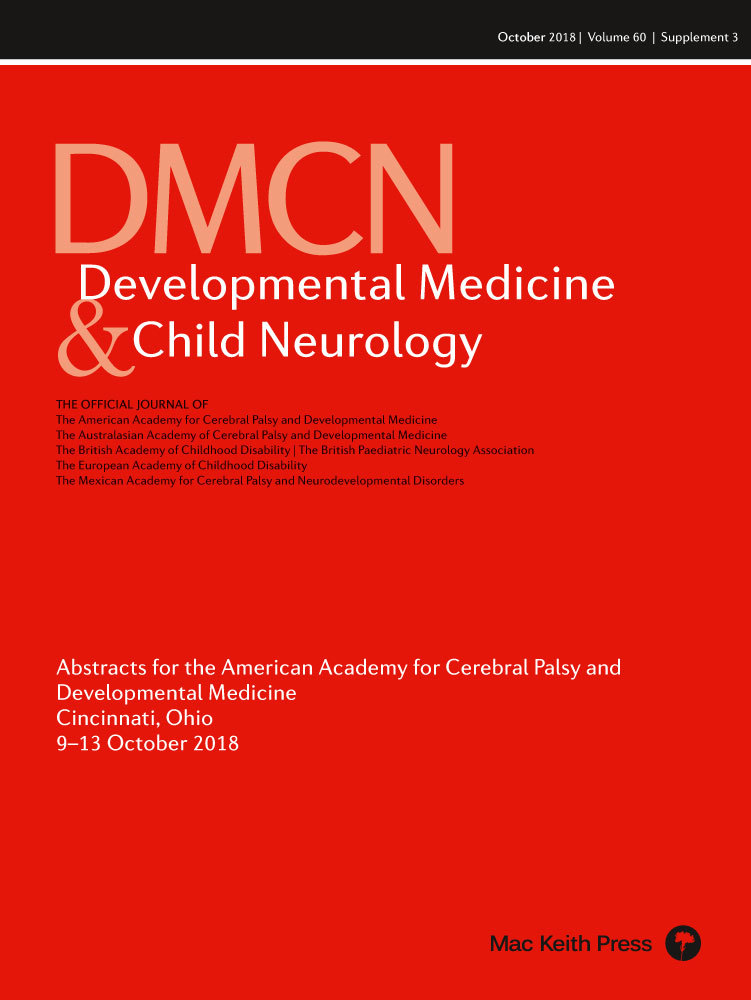Development of hand function during the first year of life in children with unilateral cerebral palsy
K4
L Sakzewski1, C Verhage2, E Sicola3, A-C Eliasson4
1Queensland Cerebral Palsy and Rehabilitation Research Centre, The University of Queensland, Queensland, Australia; 2Universitair Medisch Centrum, Utrecht, Netherlands; 3Department of Developmental Neuroscience, IRCCS Stella Maris and University of Pisa, Pisa, Italy; 4Department of Woman's and Children's Health, Solna, Sweden
Background and Objective(s): The early development of hand function for infants with unilateral CP remains unknown. It is unclear when signs of upper limb asymmetry become apparent and how hand function develops over the first year of life. The aim of this study is to identify different developmental trajectories of hand function in infants aged three to 12 months with unilateral cerebral palsy (UCP) and describe the characteristics of trajectory group membership.
Study Design: Cohort design.
Study Participants & Setting: Infants at high risk of UCP including a known neonatal event that affected the brain and/or clinical signs of UCP of unknown origin were referred for investigation of hand function. Infants were recruited from different follow-up programs and clinics at Astrid Lindgren Children's Hospital, Stockholm Sweden, Wilhelmina Children's Hospital, Utrecht, The Netherlands, Stella Mares Hospital, Pisa, Italy and Cerebral Palsy Alliance, Sydney, Australia. Referrals occurred from three month of age. Infants completed repeated assessment of hand function until 12 month of age using the Hand Assessment for Infants (HAI).
Materials/Methods: The assessments used is the HAI, a standardized observation-based test for infants aged 3–12 months, assesses the degree and quality of goal-directed manual actions performed with each hand separately and both hands together. Group-based trajectory modelling using the “traj” Plugin in Stata, with a censored normal model was used to identify and describe subgroups of infants that had similar trajectories of hand development. Multinomial logistic regression was used to determine the associations between demographic variables and trajectory group membership.
Results: Ninety-seven infants (53 males) with a confirmed diagnosis of UCP at 12–18 month were identified and included. Infants were assessed between 2–7 times (mean 4, SD 1.2) with a total of 387 unique observations. Distinct trajectories of development of hand function were identified with a 3-group model (two quadratic and one cubic) chosen. The model had an appropriate proportion of the sample in each group: “Low functioning group” 46%, “Moderate functioning group” 30% and “High functioning group” 22%. The mean posterior probabilities ranged from 0.91–0.96, exceeding the recommended 0.7. Odds of correct classification ranged between 26.3 and 33.2, exceeding 5.0, which indicates good model fit. Lower scores on the impaired hand and higher percentage difference (greater asymmetry) between scores on both hands at six months of age were significantly associated with trajectory group membership
Conclusions/Significance: Three different trajectories of hand function development for infants with UCP were identified. The highest functioning group demonstrated a more rapid and continuous acquisition of skills, a second group had slower but steady gains, and a third group showed much slower gains followed by a slight decline. The degree of impairment on the affected hand at six months was highly associated with trajectory group membership.




